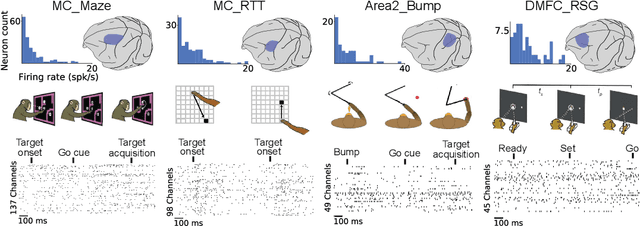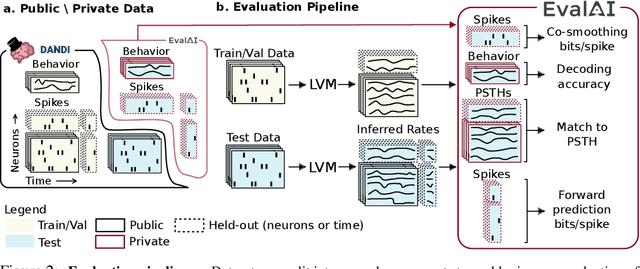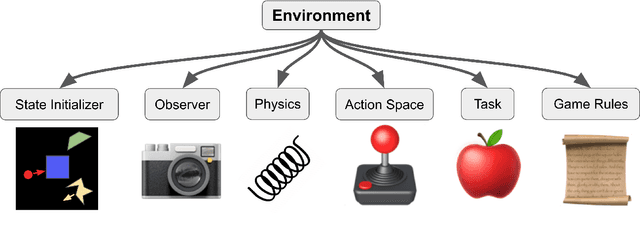Mehrdad Jazayeri
An explainable transformer circuit for compositional generalization
Feb 19, 2025Abstract:Compositional generalization-the systematic combination of known components into novel structures-remains a core challenge in cognitive science and machine learning. Although transformer-based large language models can exhibit strong performance on certain compositional tasks, the underlying mechanisms driving these abilities remain opaque, calling into question their interpretability. In this work, we identify and mechanistically interpret the circuit responsible for compositional induction in a compact transformer. Using causal ablations, we validate the circuit and formalize its operation using a program-like description. We further demonstrate that this mechanistic understanding enables precise activation edits to steer the model's behavior predictably. Our findings advance the understanding of complex behaviors in transformers and highlight such insights can provide a direct pathway for model control.
Neural Foundations of Mental Simulation: Future Prediction of Latent Representations on Dynamic Scenes
May 19, 2023Abstract:Humans and animals have a rich and flexible understanding of the physical world, which enables them to infer the underlying dynamical trajectories of objects and events, plausible future states, and use that to plan and anticipate the consequences of actions. However, the neural mechanisms underlying these computations are unclear. We combine a goal-driven modeling approach with dense neurophysiological data and high-throughput human behavioral readouts to directly impinge on this question. Specifically, we construct and evaluate several classes of sensory-cognitive networks to predict the future state of rich, ethologically-relevant environments, ranging from self-supervised end-to-end models with pixel-wise or object-centric objectives, to models that future predict in the latent space of purely static image-based or dynamic video-based pretrained foundation models. We find strong differentiation across these model classes in their ability to predict neural and behavioral data both within and across diverse environments. In particular, we find that neural responses are currently best predicted by models trained to predict the future state of their environment in the latent space of pretrained foundation models optimized for dynamic scenes in a self-supervised manner. Notably, models that future predict in the latent space of video foundation models that are optimized to support a diverse range of sensorimotor tasks, reasonably match both human behavioral error patterns and neural dynamics across all environmental scenarios that we were able to test. Overall, these findings suggest that the neural mechanisms and behaviors of primate mental simulation are thus far most consistent with being optimized to future predict on dynamic, reusable visual representations that are useful for embodied AI more generally.
Modeling Human Eye Movements with Neural Networks in a Maze-Solving Task
Dec 20, 2022Abstract:From smoothly pursuing moving objects to rapidly shifting gazes during visual search, humans employ a wide variety of eye movement strategies in different contexts. While eye movements provide a rich window into mental processes, building generative models of eye movements is notoriously difficult, and to date the computational objectives guiding eye movements remain largely a mystery. In this work, we tackled these problems in the context of a canonical spatial planning task, maze-solving. We collected eye movement data from human subjects and built deep generative models of eye movements using a novel differentiable architecture for gaze fixations and gaze shifts. We found that human eye movements are best predicted by a model that is optimized not to perform the task as efficiently as possible but instead to run an internal simulation of an object traversing the maze. This not only provides a generative model of eye movements in this task but also suggests a computational theory for how humans solve the task, namely that humans use mental simulation.
Neural Latents Benchmark '21: Evaluating latent variable models of neural population activity
Sep 10, 2021



Abstract:Advances in neural recording present increasing opportunities to study neural activity in unprecedented detail. Latent variable models (LVMs) are promising tools for analyzing this rich activity across diverse neural systems and behaviors, as LVMs do not depend on known relationships between the activity and external experimental variables. However, progress in latent variable modeling is currently impeded by a lack of standardization, resulting in methods being developed and compared in an ad hoc manner. To coordinate these modeling efforts, we introduce a benchmark suite for latent variable modeling of neural population activity. We curate four datasets of neural spiking activity from cognitive, sensory, and motor areas to promote models that apply to the wide variety of activity seen across these areas. We identify unsupervised evaluation as a common framework for evaluating models across datasets, and apply several baselines that demonstrate benchmark diversity. We release this benchmark through EvalAI. http://neurallatents.github.io
Modular Object-Oriented Games: A Task Framework for Reinforcement Learning, Psychology, and Neuroscience
Feb 25, 2021

Abstract:In recent years, trends towards studying simulated games have gained momentum in the fields of artificial intelligence, cognitive science, psychology, and neuroscience. The intersections of these fields have also grown recently, as researchers increasing study such games using both artificial agents and human or animal subjects. However, implementing games can be a time-consuming endeavor and may require a researcher to grapple with complex codebases that are not easily customized. Furthermore, interdisciplinary researchers studying some combination of artificial intelligence, human psychology, and animal neurophysiology face additional challenges, because existing platforms are designed for only one of these domains. Here we introduce Modular Object-Oriented Games, a Python task framework that is lightweight, flexible, customizable, and designed for use by machine learning, psychology, and neurophysiology researchers.
 Add to Chrome
Add to Chrome Add to Firefox
Add to Firefox Add to Edge
Add to Edge